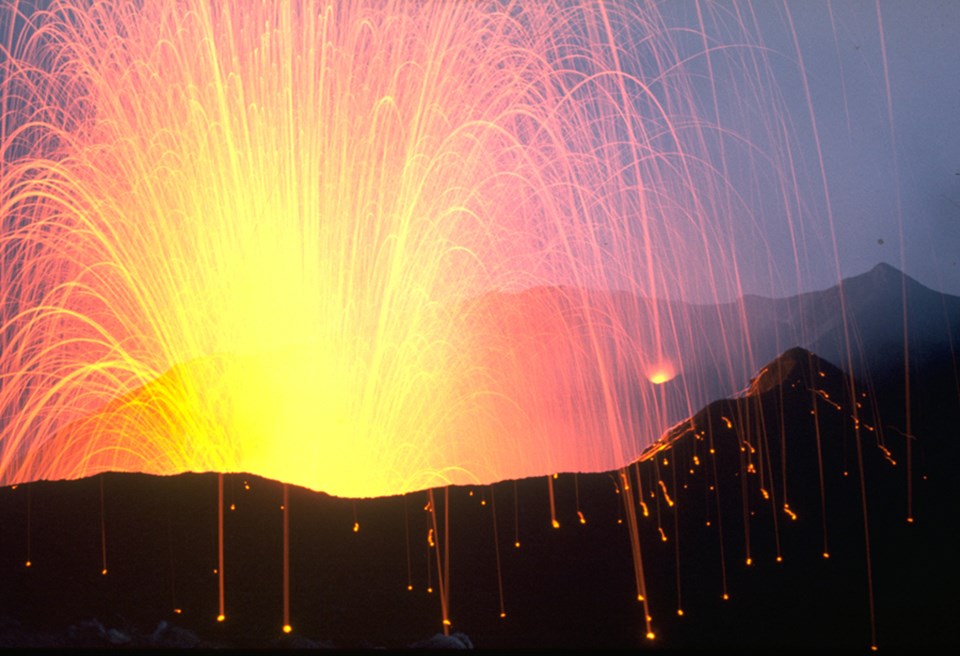Part of a series of articles titled Volcanic Eruption Styles.
Previous: Hawaiian Eruptions
Next: Vulcanian Eruptions
Article

USGS image, public domain.
Strombolian eruptions are moderately explosive eruptions of basaltic magma with moderate gas content. Strombolian eruptions consist of intermittent, discrete explosive bursts which eject pyroclasts as high as hundreds of feet into the air in firework-like incandescent rooster-tails. The discrete blasts in this eruption style are caused by vesiculation of the lava at the vent. A sustained eruptive column is not developed.
Strombolian eruptions are louder than Hawaiian eruptions, and generally are of more viscous magma.
This style is named for the Island of Stromboli which is known as the “lighthouse of the Mediterranean” for its dazzling eruptions.
The Strombolian style is common during the eruptions that build cinder cones.
Typical magma composition: basaltic to basaltic andesite
Description: Severe
Eruption Products: cinders (volcanic bombs and lapilli), volcanic ash
National Park examples: Capulin Volcano National Monument, Cinder Cone in Lassen Volcanic National Park, numerous cinder cones in El Malpais National Monument, Craters of the Moon National Monument.
Capulin Volcano National Monument (CAVO), New Mexico—[CAVO Geodiversity Atlas] [CAVO Park Home] [CAVO npshistory.com]
Capulin Volcano—Raton-Clayton Volcanic Field
Craters of the Moon National Monument and Preserve (CRMO), Idaho—[CRMO Geodiversity Atlas] [CRMO Park Home] [CRMO Lava Field] [CRMO npshistory.com]
USGS Cascades Volcano Observatory—Craters of the Moon Volcanic Field
El Malpais National Monument (ELMA), New Mexico—[ELMA Geodiversity Atlas] [ELMA Park Home] [ELMA npshistory.com]
USGS Yellowstone Volcano Observatory—Zuni-Bandera Volcanic Field (includes El Malpais National Monument)
Lassen Volcanic National Park (LAVO), California—[LAVO Geodiversity Atlas] [LAVO Park Home] [LAVO Volcanoes] [LAVO npshistory.com]
USGS California Volcano Observatory—Lassen Volcanic Center
Part of a series of articles titled Volcanic Eruption Styles.
Previous: Hawaiian Eruptions
Next: Vulcanian Eruptions
Last updated: April 14, 2023